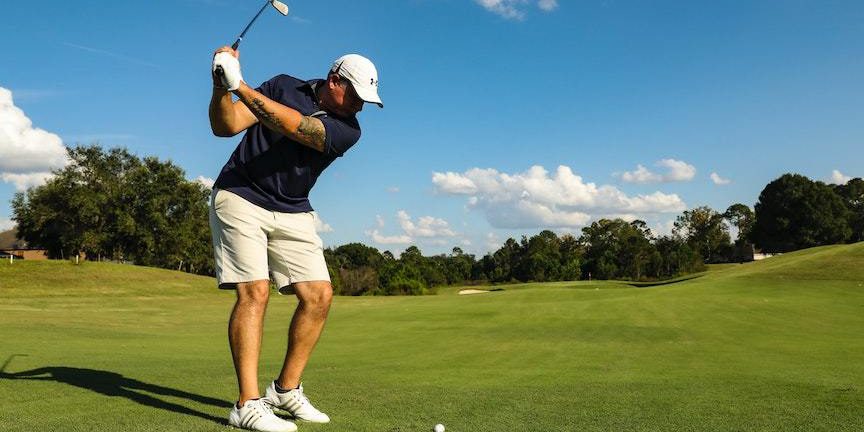Did you know…
There are 53 golf courses within 20 miles of Dallas?
But it’s difficult to play on any of them if your lower back is constantly screaming at you to stop swinging or bending over. Even mild back pain will make golf miserable for most people.
Golf is an excellent low-impact aerobic exercise. After 18 holes, players have usually walked 3 or more miles. Walking and being in nature with your friends during a golf round is proven to be healthy on several different levels, but it’s swinging clubs that can be a problem for your back.
Swinging Golf Clubs Can Stress the Lower Back.
This is especially true for the power shots, like driving and swinging fairway irons. The problem (from a lumbar-spinal perspective) is that your swing focuses a lot of force into a small, concentrated place in your back.
In order to drive a ball 250+ yards down the fairway, a golf club has to generate an incredible amount of force. That force and torque combined with the twisting of your spine propels your shot down the fairway toward the pin (hopefully).
That force can injure your spine if it isn’t distributed properly throughout your swing. The power needs to be managed with proper technique, or else you risk putting a ton of stress on the more delicate parts of your lower back.
Good swing technique is essential for golf to be a low-impact workout that preserves your spinal health. There are several variations of healthy golf swings that will keep your spine safe during your round. Whichever you choose is up to you but it’s always a good idea to consult your doctor to choose what works best for your body (and your golf game).
No matter what style you choose, here are 5 tips to help lower the risk of developing lower back pain from your golf swing:
- Don’t bend too far to the trailing side during your forward swing. This puts excessive force on the trailing side.
- Don’t make your swing longer by over rotating the body through the beginning or end of your swing.
- Avoid rotating your leg inward at the hip with a narrow range of motion, risking injury to the hip.
- Strengthen the core muscles that provide spinal support throughout your swing.
- Avoid playing golf for extended periods of time. Fatigue can make your technique sloppy and increase the chances of injury.
Good swing technique is the foundation of a healthy golf game that can last your entire life. But unfortunately for some golfers, no matter what they try, 18 holes always ends in lower back pain.
If you’re still feeling lower back pain despite your best efforts to improve your technique, it’s a good idea to contact doctors who specialize in spinal health.
A qualified doctor can do more than help you get relief from your symptoms. They can also identify what is causing the pain in the first place and offer more permanent solutions.
Consulting an expert gives you the best available options to relieve your pain and keep your spine healthy in the short run and the long run. That way, you can keep putting in pain-free rounds. Contact Texas Neuro-Spine to learn more.







